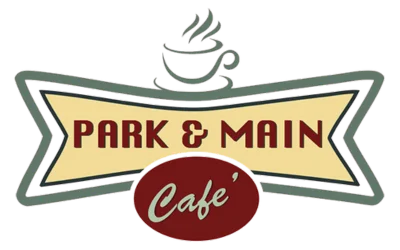The typical Italian breakfast, or colazione, is a simple affair, often enjoyed quickly before the day’s activities begin. Unlike the elaborate breakfasts found in some other countries, Italians favor a lighter, sweeter start to their day, often consisting of a hot beverage and a pastry. This is not to say that Italians don’t enjoy a hearty breakfast, but the traditional approach is typically quick and simple.
Coffee: The Heart of the Italian Breakfast
Coffee is undoubtedly the cornerstone of the Italian breakfast. It’s not just a drink; it’s a ritual, a moment of pause and pleasure before the day gets underway. There are several ways Italians enjoy their morning coffee:
- Espresso: The most common choice, a strong, concentrated shot of coffee. It’s often consumed standing at the bar of a local café.
- Cappuccino: A classic breakfast beverage, consisting of espresso, hot milk, and milk foam. However, it is generally only enjoyed in the morning, as Italians believe milk can hinder digestion later in the day.
- Latte Macchiato: A tall glass of hot milk with a “stain” of espresso, ideal for those who prefer a milder coffee.
- Caffè Macchiato: An espresso with a small amount of foamed milk.
For children, or those who prefer a non-caffeinated option, hot chocolate or plain milk are common choices. A lesser-known option is Orzo, a roasted barley beverage that resembles cocoa.
Pastries: A Sweet Indulgence
Alongside coffee, pastries play a significant role in the Italian breakfast. They provide a touch of sweetness to start the day. Some of the most popular breakfast pastries include:
- Cornetto: This is the Italian version of a croissant, often filled with cream, custard, jam, or chocolate. It is a staple at most Italian cafes and is often incorrectly called a croissant or brioche in Italy.
- Sfogliatella: A shell-shaped pastry with a flaky exterior and a rich ricotta filling, popular in Naples and often enjoyed as dessert, it is also great for breakfast.
- Maritozzi: A sweet bread, commonly found in Rome, often filled with whipped cream.
- Biscotti: Crunchy, almond-flavored biscuits that are perfect for dipping in coffee.
- Bomboloni: These are large, heavy, fried doughnuts coated in sugar and usually filled with pastry cream or chocolate.
- Saccottino/Bauletto: These pastries, which can vary in name by region, are typically filled with chocolate, custard cream, or jam.
Other Breakfast Options
While coffee and pastries are the most common, there are other breakfast options that Italians enjoy, especially at home:
- Bread and Jam: A simple yet satisfying option, often using fresh bread and various jams, with orange marmalade being a popular choice for those who like a slightly bitter taste.
- Milk and Cereal: A common breakfast, especially for children, and can be customized with milk alternatives and various cereals.
- Yogurt and Fruit: A lighter, healthier option, often combined with fresh seasonal fruit, dried fruit, and nuts, sometimes with a touch of honey.
- Homemade Cakes: Simple cakes like ciambella (a ring-shaped cake), torta di mele (apple cake), or lemon plumcake, are often baked at home and enjoyed for breakfast.
- Fette biscottate: A type of crisp, lightly sweetened toast which is often topped with jams, honey, or Nutella.
- Muesli: Often combined with milk or yogurt for a healthy start to the day.
Regional Variations
Italian breakfast habits can differ depending on the region:
- Northern Italy: Breakfasts are often more substantial, sometimes including bread, cold cuts, and cheese.
- Central Italy: Sweet pastries reign supreme, with many regional specialties such as the Roman maritozzi and bomboloni.
- Southern Italy: Lighter breakfasts are favored, including pastries or biscuits with iced coffee. In this region, granita with brioche, a semi-sweet bread is also common.
Breakfast at Home vs. at a Bar
The way Italians have breakfast can vary depending on where they are. At home, a typical breakfast might be a simple affair with milk, cereal, and biscuits, or bread and jam. When out at a bar or café, it’s much more common to enjoy a coffee with a pastry like a cornetto. It’s a quick, in-and-out experience, often done standing at the counter.
Savory Options
Although less common, savory options do exist in the Italian breakfast repertoire. In some northern regions, you might find frittata (an Italian omelet), or bread with slices of meat such as prosciutto, bresaola, or mortadella, along with cheeses. However, this is not typical.
The Italian Breakfast Culture
Italians don’t usually eat large breakfasts, instead preferring something quick and sweet. It’s a social ritual, often enjoyed standing at a café counter or shared with family at home. It’s a moment to savor a quick treat before starting the day. Unlike other cultures where breakfast may include savory items, the Italian colazione is typically sweet. Eggs, bacon, or any other meat for breakfast are not common. This is in stark contrast to breakfasts in many other parts of the world.
Ordering Breakfast Like a Local
When ordering breakfast in an Italian café, start by ordering your coffee, stating whether you want an espresso, cappuccino or other preferred option, followed by your choice of pastry. It’s common to say “Un cappuccino, per favore” (One cappuccino, please). A simple “caffè e cornetto” (coffee and cornetto) is a classic combination.
In conclusion, the Italian breakfast is a simple yet delightful experience. It’s a sweet start to the day with a focus on coffee and pastries, and is a key part of Italian culture. Whether enjoyed at home or a local cafe, the Italian breakfast is a ritual worth experiencing.








